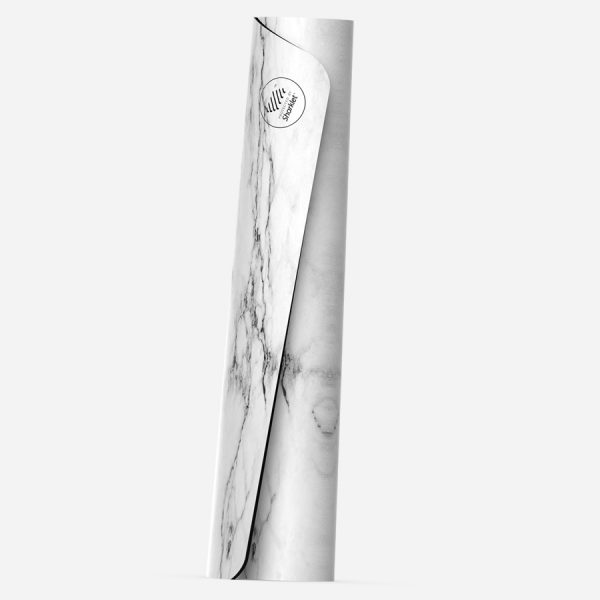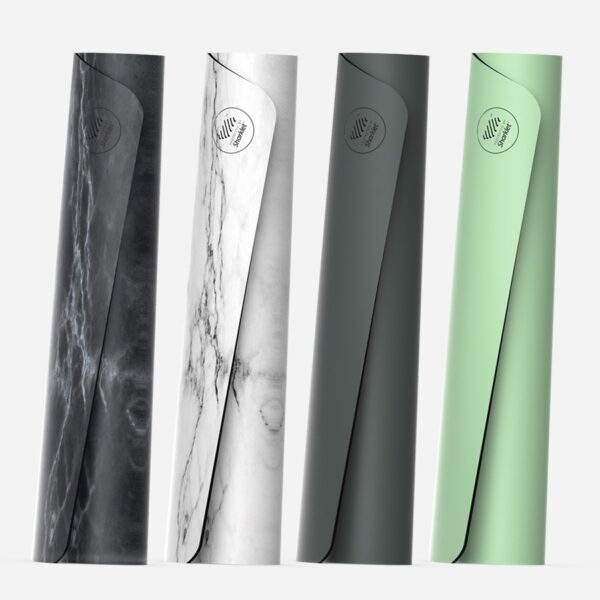Yoga Mat
There’s no denying the multiple benefits of yoga. From its ability to alleviate stress and anxiety to reducing inflammation and chronic pain, this ancient practice helps many people improve their overall quality of life. You don’t have to be a passionate yogi to make use of a yoga mat.
Yoga mat is an equipment that affords you to exercise not only yoga but also a wide variety of floor-based activities. It should be comfortable and supportive, provide sufficient grip to keep you from slipping, and be no-fuss enough to clean and carry (perhaps just from home to the park for now, but eventually back to in-person classes at your beloved gym or studio). Especially at a time when many of us are staying home to help stop the spread of coronavirus, eco friendly yoga mat become an essential at-home workout and stress reliever for many.
So it’s a good time to invest in a mat of your own to always have at home — or to upgrade from that bargain mat you bought when you first started practicing. When you start to browse, however, you’ll wonder if you should extra thick or thin in a mat, and whether you need a yoga towel for support.
Of course, there is an apparently unlimited array of yoga mats on the marketplace available to pick up nowadays. Some are thick, while others are thin; some are super grippy and others are smooth. Are you better off opting for a pretty mat or one that looks super durable?
Materials of Yoga Mat
According to the material, the followings are the most common: polyurethane, phthalate-free PVC , natural jute, organic cotton, and rubber.
Nowadays, several sport brands developed reversible yoga mat. One side is made of polyurethane, while the other side is made of natural rubber. The polyurethane top layer absorbs moisture to help you get a grip during sweaty yoga practice. A natural rubber base gives you cushioning and a textured grip for low-sweat practices. An antimicrobial additive helps prevent mold and mildew on the mat. But this kind of mat will have a slight smell that will fade over time ( you can roll it out and air it out before you head to class).
For environmental enthusiatis, there is a yoga mat made from biodegradable, 99% latex free, natural tree rubber with non-toxic foaming agents and non-AZO dyes. Biodegradable and eco-friendly yoga mat firmly supports both your practice and our planet. No PVC or harmful plasticizers.
Thickness of Yoga Mat
Thickness is critical since you want enough cushion to make you comfortable, but not so much that it interferes with your balance. Standard thickness mats strike a balance at around 1/4”. Extra cushioning mats can be a luxurious 1/2” thick. Thin, portable mats can be as thin as 1/16”. If you are taking your mat to classes, you may also want to consider a travel mat with a carrying strap, maybe the lighter, the better. In order to suit your body in hot yoga, extra-thick yoga mats are optimal for anyone with knee problems, ones with a mega grip that come in useful throughout super-sweaty exercises like warm yoga exercise, as well as ultralong mats for taller folks.
Other considerations of Yoga Mat
Yoga mats are available in many colors and patterns. “Alignment mats” are printed with guides to proper alignment, helping the yogi to place feet the right distance apart and accurately in line with each other. Some companies print custom images on mats, especially the more expensive ones. Some travel mats can be folded into a small square. In addition, white yoga mats are rare. Try Sharklet Yoga Mat now?
Cleaning problems
Aid to prevent germs and nasty scents and last the life of yoga mats, perhaps you should clean your mat often. Cleaning your yoga mat is especially important if you’re exercising at a yoga workshop where you share mats or props with others.
The same rules still apply to your at-home practice, even if there’s a lower risk of cross-contamination. Remember: do not put your yoga mat into washing machine(unless mentioned). To eliminate germs and help protect against the spread of infection, think about disinfecting yourself. After every practice, wipe mat clean with damp cloth and air dry before rolling and storing out of direct sunlight. Own a Sharklet Yoga Mat, Never buy yoga mat cleaner anymore!
Last but not least, price matters. Economical mats are easy to find at large box stores, but the mat you pick up may get what you hate. Mats under $20 may be sold pretty promptly and usually have a chemical smell. A few of the most popular yoga exercise mats are in the mid $20 range if you do not mind a PVC mat with a little smell. Expense typically increases with the top quality of materials, constructed, as well as eco-friendliness.



